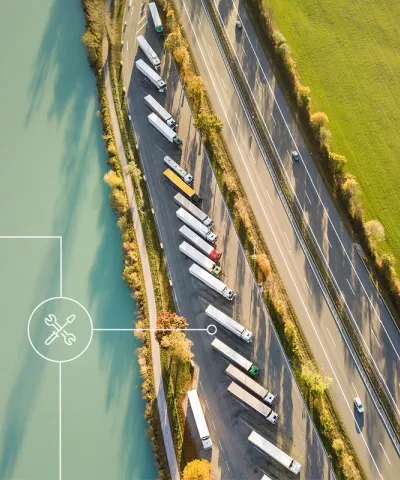Omni-channel and big data drive digitalization in the retail industry
The retail sector has been grappling with the internet for the past two decades, and a lot of progress has been made in optimizing online channels to improve the shopper journey. Yet as digital technologies advance, the shortcomings of the retail sector’s approach to the online world are becoming increasingly apparent. Treating digital mainly as an IT topic, and consequently relying too heavily on data, does not unlock the profit potential digitalization brings. A clear strategic vision among C-levels on how to monetize what products and services in which customer groups, as well as approaches tailored specifically to the company’s own customer base, are key success factors that most traditional retailers still lack.
Insights
Retailers aren’t exactly in love with the fact that online channels and exclusively digital players are threatening their business models and destroying their margins. Yet they have reluctantly come to accept the online channel is a hygiene factor they need to offer if they want to stay in business. Seen in a much more positive light, “big data” is another trend that almost all major players are addressing, with the objectives of improving customer communication and increasing the effectiveness of promotions and price management.
Still, there have been no huge success stories as yet. Maybe it is too early to tell, but more likely the main reason is that retailers see big data initiatives as an IT topic. They try to do everything that is technically doable, not what makes commercial sense, and risk creating complex, data-heavy processes and solutions that are irrelevant for customers. Many digitalization efforts fall into this category: machine learning algorithms for long-tail products that will never generate enough data points for a meaningful analysis, big-data-based segmentation that doesn’t yield operational indications for the product range or store design, and trial and error dynamic pricing via digital shelf labels that burn millions in profit.
To benefit from the opportunities of digitalization, retailers should focus much more on their customers and their unique needs. In more practicable terms, this means specifically tailoring the shopper journey or sales dialog instead of blindly copying solutions from other retailers. If the clientele prefers to shop online but then drives to the store to pick up the merchandise (e.g., fresh food, take-out meals), a good click & collect solution is required. On the other hand, if customers want to get the look and feel of products in store (e.g., consumer electronics, fashion) but then have products delivered to their homes, click & collect is not relevant; a good ship-to-home process is required. Premium retailers should rather invite VIPs to exclusive shopping events, instead of copying a heavy communications approach that spams customers with hundreds of newsletters. Last but not least, curated shopping services make a lot of sense when customers are involved with their purchases and are interested in a community – but not so much when it comes to soap and washing powder. Here, digitalization in the form of buy-buttons or automatic shopping reminders are more useful.
At the forefront of digitalization
In contrast to the traditional (food and non-food) retail industry, retail banks are clearly in the lead when it comes to digitalization. They are working hard to engage with their customers online and have started to revamp individual login areas, using this space to offer new products such as an additional savings account, trading accounts for stock options, and pension funds. Applying insights from behavioral economics, the portfolio is displayed in a playful way, e.g. customers complete a “shopping basket” puzzle and collect points within a loyalty scheme. Known as gamification, this could also work for retailers. A customer-specific identification of relevant shopping baskets and themes as well as a communication touchpoints is necessary. Many retailers already have a loyalty program that generates a lot of data – they “only” have to use these smartly and combine them with other digital possibilities.
Advice from our experts
For retail companies, there is no one-size-fits-all approach to optimizing the digital customer experience. Here are three important steps to point you in the right direction:
- Don’t do what is technically doable, but what makes commercial sense. This applies especially for new developments and devices: smart mirrors, drive-by-shopping, and automated checkout systems may all look great on paper, but they are expensive, and without a commercially viable monetization strategy, they won’t bring the required ROI.
- Center all your actions on your customers’ needs and preferences. Accept that your customers may be different from those of other companies. What works for others may or may not work for you. Use big data and other digital possibilities to tailor your offer to your customers.
- Don’t become too data driven, or even data dependent. Without a well thought-out strategy and clear goals, even big data analyses follow the “garbage in – garbage out” logic. Data is an enabler but not a guarantee for commercial success.







